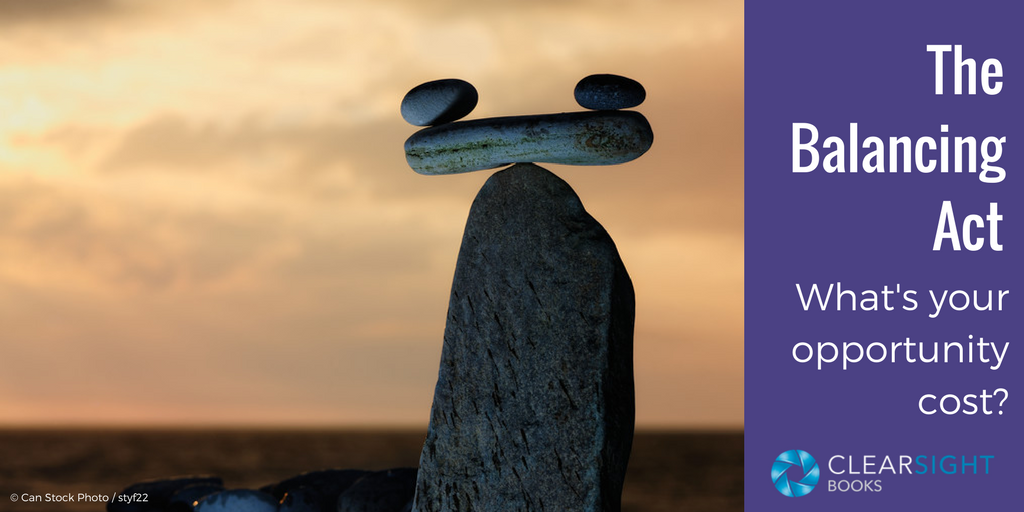 “You have one dollar,” our teacher said. “You can spend it on a comic book or on candy—but not both.” She let us think about our choice. “If you choose candy, you can’t have the comic book. And if you choose the comic book, no candy. Whichever item you don’t choose is your ‘opportunity cost.’”
“You have one dollar,” our teacher said. “You can spend it on a comic book or on candy—but not both.” She let us think about our choice. “If you choose candy, you can’t have the comic book. And if you choose the comic book, no candy. Whichever item you don’t choose is your ‘opportunity cost.’”
It was a harsh lesson at an early age. What? I can’t have it all?!
Nope. You can’t have it all.
Opportunity costs are everywhere
Money drives the classic opportunity-cost calculation because for most of us money is a constrained resource. We have a limited amount to spend, so we must choose wisely where to spend it. In business we ask: Which new product has the largest net present value (NPV)? Which piece of equipment will bring the greater return on investment (ROI)?
Since “time is money,” solopreneurs realize they need to hire assistants and bookkeepers because all that administration takes too much time. They need to spend their time doing the things only they can do. (We even talk about “spending time” the same way we talk about “spending money.”)
Writing a book entails the same calculation: If you write during business time, what are you NOT doing? Sales? Marketing? Administration? Service delivery? If you write on personal time, what are you NOT doing? Binge-watching a mildly entertaining show that you forget as soon as it’s over? Dinking on social media? Exercising? Spending time with friends? Volunteering?
Conversely, what do you give up if you don’t write your book? How many doors could a book open? Which relationships might become possible? What visibility might you gain?
Trade-offs only get harder
The older I get the more I find time to be my constrained resource and the trade-offs to be harder. Elizabeth Gilbert (author of Eat Pray Love) explains why she turned down an invitation to a literary festival in Spain. (A literary festival in Spain!!)
“I needed to decline… as much as I would love to go… I am the bodyguard of … this new novel I’m working on—and everything else has to be defended against… [T]here comes a period in your life where you have to learn how to say no to things that you don’t want to do, but I think the biggest, trickiest lesson is in … learning how to say no to things you do want to do—including going to Spain.”
Oh, she hit the nail on the head for me: the trickiest lesson is learning how to say no to things you do want to do.
Opportunity costs are real
Those “should I/shouldn’t I” decisions—big or small—usually boil down to this: Is the trade-off worth it?
- What are you committed to creating with your money and your time?
- Which things, activities, or people are you willing to say no to in order to create it?
- What are the right trade-offs for you?
Today, if I were offered the choice of candy or a comic book, I’d politely decline both and put my dollar in the bank. Time, however, does not offer us that option. Spend it well.
If you struggle with opportunity cost and trade-offs, you are not alone! I often find my articles reflect something I’ve dealt with (or am dealing with!) myself. If you’d like to discuss different approaches to getting your book done—whether to minimize your time investment or your dollar investment—give me a call at 919-609-2817.

